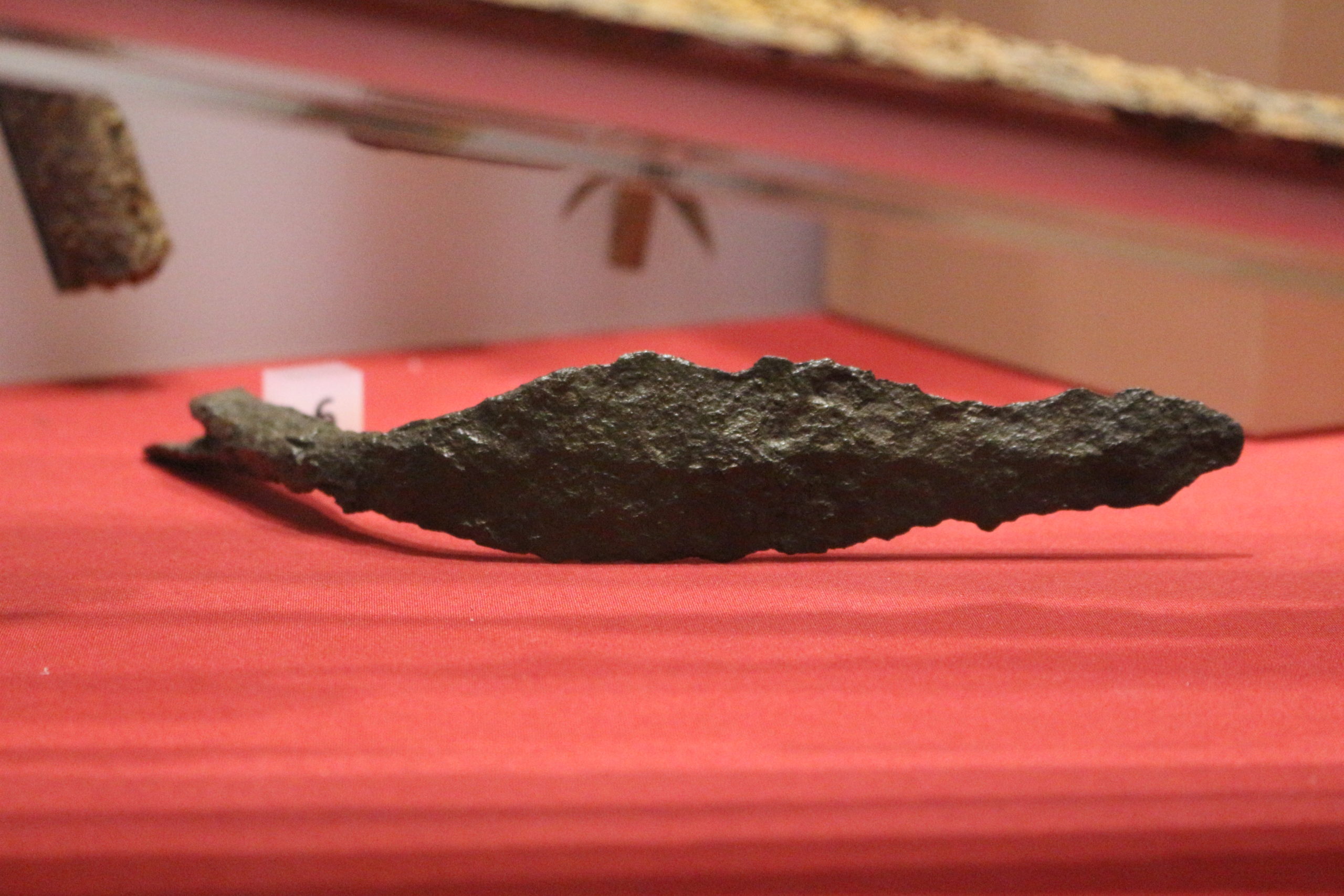1 iron spearhead, blade flat, bent at right angles to split socket, found on Rushall Down, Rushall, Wiltshire.
The people we call Anglo-Saxons * were originally immigrants from northern Germany and southern Scandinavia. Bede, a monk from Northumbria writing some centuries later, says that they were from some of the most powerful and warlike tribes in Germany.
Spears were the most frequently used weapon in Anglo-Saxons army. Archaeologist Heinrich Härke found that as many as 47% of males buried with grave goods were buried with a spear. Three different metals were used in the making of spears: Piled iron, phosphoric iron and carbon steel. Piled iron is just standard iron, useful for making anything from spears to plows. Phosphoric iron is often found in bogs and is much softer than other irons and steel, making it a top choice for decorative work. Carbon steel is considerably harder than iron and is useful in the making of tips for blades. Spears carried great symbolic weight in Anglo-Saxon society due to their importance in war fighting.
On a symbolic level they represented both power and masculinity. The Anglo-Saxon epic The Battle of Maldon** illustrates this relationship brilliantly as warriors use spear gestures to encourage and intimidate before battle. With so much symbolic weight it is no surprise that these weapons were frequently found in graves; possibly serving their owner in the afterlife or acting as a reminder of past status and power.
The larger spears were called Æsc (‘Ash’) and had a wide leaf-shaped blade. They were long-hafted and much prized. There was also the Gar. This was the most common term for a spear and we still preserve the term today in words like ‘garlic’ (‘spear-leek’).Both the Æsc and the Gar were retained in the hands of their wielders in fighting, but lighter types were known with a thinner shaft and blade.
There is evidence for dancing with spears in Anglo Saxon antiquities. The Mantebo memorial stone, and the Oland metal helmet stamp from Sweden, and the foil covered helmet plates from Sutton Hoo, Suffolk and Caenby, all of which are from England, show figures bearing spears, (and sometimes additionally a sword), in dance poses.
In summary, the spear was the most common melee combat weapon. That represented manhood and power this meant it is a significant part of our Anglo-Saxon ancestry that helped shape the country we know today. They shaped our land so much the average British citizen is 36.94% related to the Germanic peoples that first invaded in the fourth century.
* The Anglo-Saxons were warrior-farmers and came from north-western Europe (mainly what we know as Germany). They began to invade Britain while the Romans were still in control.
**The Old English poem was written soon after the battle itself, probably by a monastic scribe. Unfortunately, the manuscript was burned in the Cotton fire at Ashburnham House in 1731.
Joe Moore


